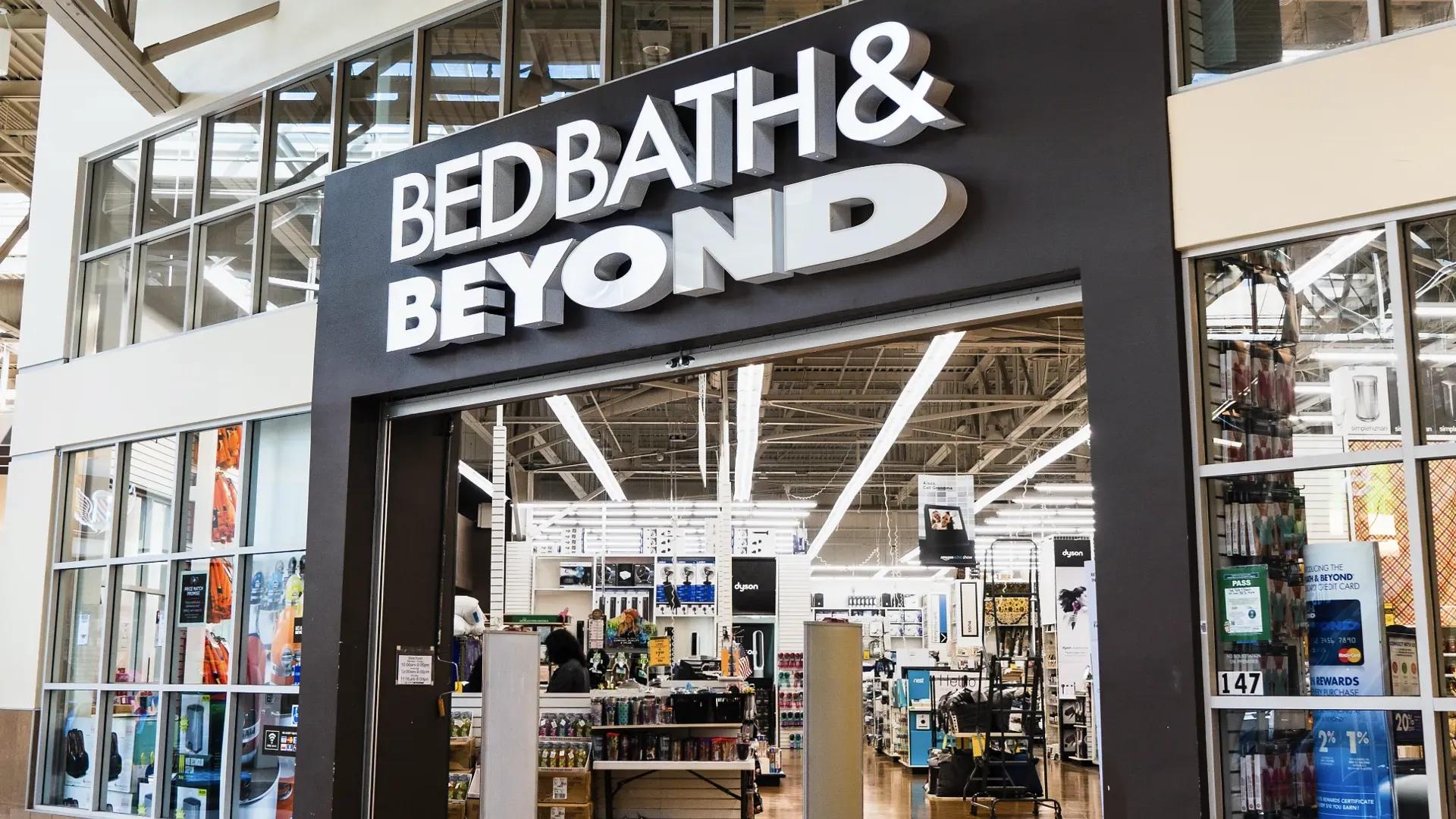The Origin of Bed Bath & Beyond
Once a retail titan with iconic coupons, Bed Bath & Beyond soared from 1971 beginnings to national fame—until digital disruption led to bankruptcy and an online rebirth.

Bed Bath & Beyond was once one of America’s most beloved home retailers, known for its cavernous aisles and endless 20%-off coupons. Over five decades it grew from a single shop to a national chain, even becoming a pop-culture staple mentioned on TV shows and in movies. Yet the brand that dominated the home goods space has faced dramatic challenges in recent years. This article traces Bed Bath & Beyond’s journey—from humble origins in 1971 to its rise as a retail powerhouse, and the recent upheavals that led to bankruptcy and a digital rebirth.
Founding in 1971: A New Concept in Home Retail
In 1971, two veteran retailers Warren Eisenberg and Leonard Feinstein left their jobs at a struggling discount chain with a bold idea. They believed specialty stores could seize the moment as traditional department stores declined. With $50,000 each, they opened the first Bed ‘n Bath stores in Springfield, New Jersey (with a second location on Long Island) that same year. The concept was simple: offer name-brand bedding and bath merchandise at discounted prices. Shoppers responded, and the small Bed ‘n Bath stores steadily gained a loyal following. Early on, the founders’ philosophy of value and selection set their store apart—customers could find quality linens, towels, and home furnishings for less, all in one convenient location.
Building on this success, Bed ‘n Bath expanded through the 1970s and early 1980s by opening more locations in the Northeast. By 1985, the company had 18 stores across the New York-New Jersey area and California. That same year, Eisenberg and Feinstein debuted a revolutionary new 20,000-square-foot “superstore” format. This larger store was designed to carry a much broader range of merchandise under one roof, introducing the big-box home goods store concept. As co-founder Warren Eisenberg later noted, “We were accused of making the stores too crowded,” but the decision to pack the new superstores floor-to-ceiling with products was intentional. Shoppers loved the treasure-hunt experience of exploring overflowing shelves—the thrill of not knowing what they might find became a key part of the experience. These early moves paved the way for other big-box retailers and established Bed ‘n Bath as a growing force in home retail.
Becoming Bed Bath & Beyond: Expansion in the 1980s–1990s
By the late 1980s, the company’s stores were offering far more than just “bed” and “bath” goods. To reflect its expanded assortment—ranging from kitchenware to home décor—the chain rebranded as Bed Bath & Beyond in 1987. This new name captured the store’s broader scope and set the stage for nationwide growth. Bed Bath & Beyond had effectively pioneered the “category killer” retail model, using its superstores to offer an unmatched selection in its niche at affordable prices. It wasn’t just a linen store anymore, but a one-stop shop for everything beyond the bedroom and bathroom.
During the 1990s, Bed Bath & Beyond rode a wave of expansion. The company went public with an IPO in June 1992, raising capital to fuel further growth. New superstores popped up across the country—by 1996 the chain had opened its 100th store, and by 1999 it had over 200 locations coast-to-coast. That year, annual sales surpassed $1 billion for the first time. A savvy marketing strategy bolstered this success. Bed Bath & Beyond became famous for its iconic big blue coupons offering 20% off a single item, which began arriving in millions of American mailboxes. These ubiquitous coupons, an innovation in retail promotions, kept customers coming back and became a hallmark of the brand’s identity. Shoppers would often stockpile the coupons (which the store generously honored even after expiration) and head to the store for a bargain. Combined with periodic sales and a well-regarded wedding registry program, these strategies cemented the retailer’s reputation as a go-to destination for home essentials and gifts.
Equally important was the company’s emphasis on customer experience. The stores were designed to be immersive and even a bit overwhelming—towering shelves crammed with merchandise created a “pile it high, let it fly” atmosphere where customers could wander and discover products serendipitously. Despite the crowded aisles, the chain prided itself on helpful customer service, from knowledgeable sales associates to liberal return policies. This blend of vast selection, constant coupons, and a friendly shopping environment turned Bed Bath & Beyond into a retail icon by the end of the 1990s, embedding it in American pop culture.

Bed Bath & Beyond grew into a familiar sight across suburban America. Its big-box stores offered aisles of home goods—from bedding and bath items to kitchenware “and beyond”—all under one roof.
The Big-Box Retailer in a Changing Era
Continuing its dominance into the 2000s, Bed Bath & Beyond expanded further by incorporating new product categories and engaging in strategic acquisitions. The chain acquired Harmon Stores (specializing in health and beauty products) in 2002 and Buy Buy Baby (focusing on infant goods) in 2007, extending its reach into personal care and baby gear. The company also diversified into specialty furniture and décor with the acquisitions of Cost Plus World Market in 2012 and the online retailer One Kings Lane in 2016. At its peak in 2011, Bed Bath & Beyond operated over 1,100 stores in the U.S., Canada, and beyond, and was a regular feature in the Fortune 500 rankings. It even outlasted its major brick-and-mortar rival, Linens ’n Things, which went bankrupt in 2008. By all accounts, Bed Bath & Beyond had become the category leader for home furnishings retail.
However, the retail landscape was evolving rapidly in the 21st century. The rise of e-commerce and digital giants like Amazon challenged traditional retailers to either adapt or fall behind. Unfortunately, Bed Bath & Beyond was slow to embrace online shopping—a strategic misstep that would later prove costly. As more consumers shifted to online purchasing, the company remained overly reliant on its physical stores and famous mailer coupons, while competitors aggressively invested in digital and omnichannel strategies. For a time, the chain continued to post growth, but underlying issues soon became apparent. By the late 2010s, as online competition intensified and newer home décor players entered the market, the once-steady sales momentum began to falter.
Internally, the company attempted to pivot. After a disappointing performance in 2018, activist investors pushed for leadership changes. Longtime CEO Steven Temares stepped down in 2019, and the board brought in Mark Tritton, a Target executive known for revitalizing merchandise. Tritton moved quickly to modernize the business by shedding non-core divisions—such as Cost Plus World Market and the Christmas Tree Shops—to refocus on the core Bed Bath & Beyond brand. He also executed a sale-leaseback of real estate assets to raise cash. Notably, Tritton pulled back on the legendary coupons, attempting to wean the company off heavy discounting, and introduced a slate of trendy private-label brands to diversify the product mix. However, these changes alienated many loyal customers who missed the familiar coupons and national brands, leading to a dip in foot traffic and a decline in sales.
Meanwhile, the company began investing in its omnichannel and digital capabilities. Between 2020 and 2021, Bed Bath & Beyond rolled out curbside pickup, buy-online-pickup-in-store, same-day delivery options, and a revamped website to better integrate its stores with its online presence. The COVID-19 pandemic accelerated this digital transformation, as shifting consumer habits and safety concerns drove more shoppers online. A new “Home, Happier” marketing campaign was launched, and online advertising efforts increased, targeting a younger demographic. For a while, these initiatives appeared to pay off, positioning Bed Bath & Beyond as an “omni-always” retailer prepared to serve customers both in-store and online.
Recent Challenges (2021–2023): Decline, Bankruptcy, and a Digital Rebirth
Despite these turnaround efforts, the challenges facing Bed Bath & Beyond intensified from 2021 onward. Supply chain disruptions and evolving consumer behavior during the pandemic created additional headwinds. New private-label merchandise struggled to gain traction, leaving the company with excess inventory that it couldn’t sell. By early 2022, sales were plummeting, and the company faced significant losses. In June 2022, after another dismal quarter, Mark Tritton was ousted as CEO and replaced by board member Sue Gove on an interim basis. Gove soon became the permanent CEO and moved swiftly to stabilize the business by cutting costs, laying off 20% of corporate staff, and announcing 150 store closures in August 2022. Although the company secured new financing and tried to recapture customers by emphasizing national brands and promotions, these efforts were not enough to reverse the downward trend.
By late 2022, Bed Bath & Beyond found itself fighting for survival. The company had already closed over 200 underperforming stores during 2020–2021 to conserve cash, and growing concerns among suppliers further destabilized the business. In early January 2023, the company issued a stark warning, expressing “substantial doubt” about continuing as a going concern—signaling that bankruptcy was likely imminent. In the following weeks, Bed Bath & Beyond took desperate steps to stay afloat: it hired restructuring advisors, shuttered all remaining Harmon Face Values locations, and closed additional Bed Bath & Beyond and Buy Buy Baby stores. An urgent stock offering was attempted to raise cash, but ultimately, the challenges proved insurmountable.
On April 23, 2023, Bed Bath & Beyond (along with its Buy Buy Baby subsidiary) filed for Chapter 11 bankruptcy protection, initiating proceedings to liquidate its business. At the time of filing, the chain had shrunk to 360 Bed Bath & Beyond stores (from over 1,500 in its prime) and 120 Buy Buy Baby stores—with plans to close the latter by the summer of 2023 if no buyer emerged. Going-out-of-business sales commenced, and by late April 2023, the once-beloved coupons were finally discontinued. By the end of July 2023, the last Bed Bath & Beyond stores had closed their doors, marking the dramatic end of an era.
Even as the physical stores disappeared, the brand managed to reinvent itself. In a June 2023 bankruptcy auction, online retailer Overstock.com purchased the Bed Bath & Beyond brand, website, and intellectual property for $21.5 million. Overstock subsequently rebranded its entire online business as Bed Bath & Beyond, relaunching the website in August 2023 as an online-only store featuring a mix of home goods merchandise. In effect, the iconic brand has been digitally transformed: Bed Bath & Beyond now exists solely as an e-commerce retailer under new ownership, even as its brick-and-mortar legacy lives on only in memory.
Meanwhile, remnants of the old empire have found new paths. The Buy Buy Baby brand was sold to a separate investor, with plans to possibly revive it in the future. In Canada, former Bed Bath & Beyond locations were acquired by a group intent on launching a new home store chain, ensuring that part of the legacy endures in that market.
Bed Bath & Beyond’s journey—from a modest New Jersey shop in 1971 to an American retail icon, through phases of rapid expansion and innovation, and finally into a dramatic collapse and digital rebirth—stands as a cautionary tale of retail evolution. It highlights the critical need to adapt to ever-changing consumer trends, whether transitioning from small specialty stores to big-box superstores, or from brick-and-mortar to the digital realm. While the physical stores are now a part of history, the brand's next chapter is unfolding online, carrying forward a half-century legacy into the modern era.

Dane Hurtubise
Co-founder & CEO of Spoken
Dane Hurtubise is the Co-founder & CEO of Spoken. He has led two venture-backed companies and is a two-time Y Combinator alum. Prior to Spoken, Dane sold his previous company, Parklet, to Greenhouse Software where he served as VP of Platform and Partnerships. An avid runner, cyclist, and Pilates enthusiast, Dane holds a BS in Electrical and Computer Engineering from the University of Texas at Austin.
Read more